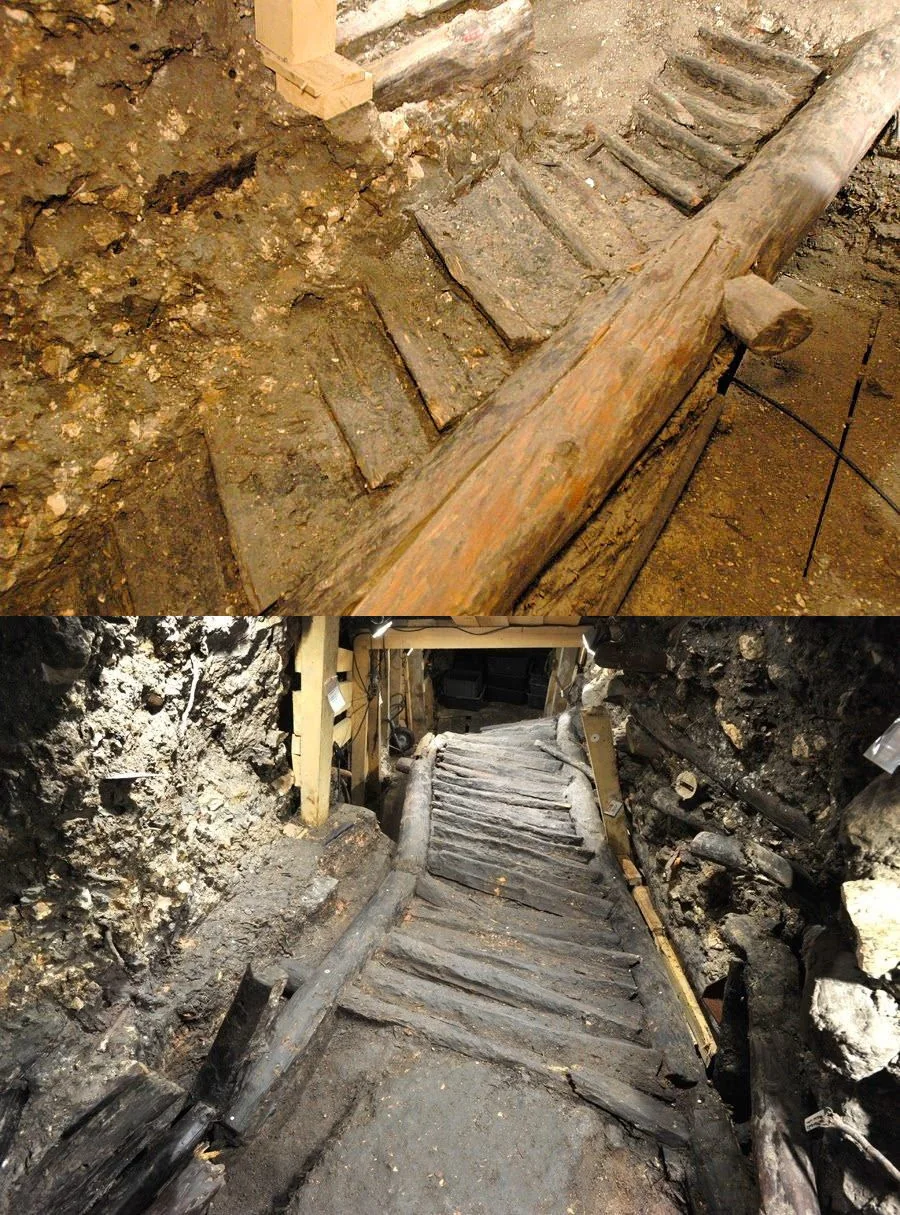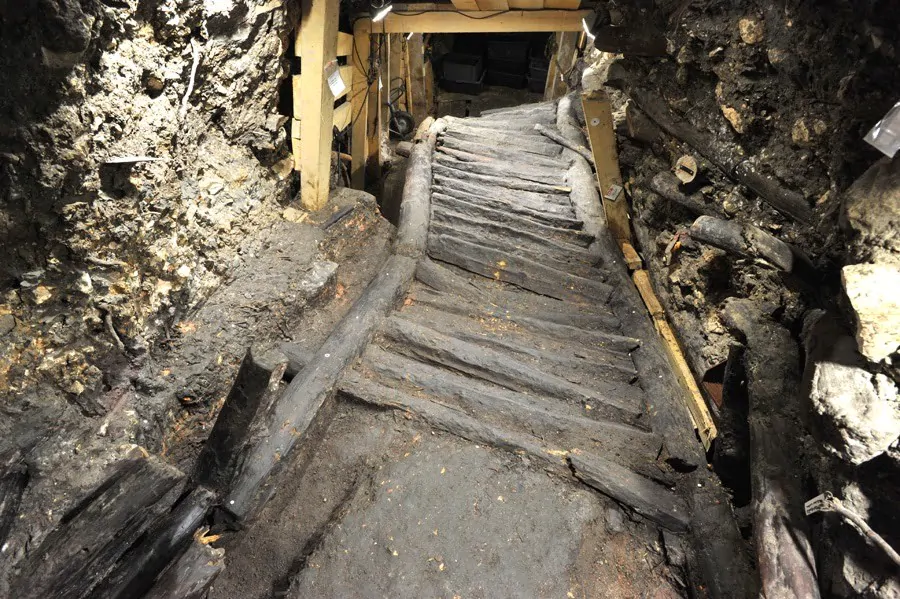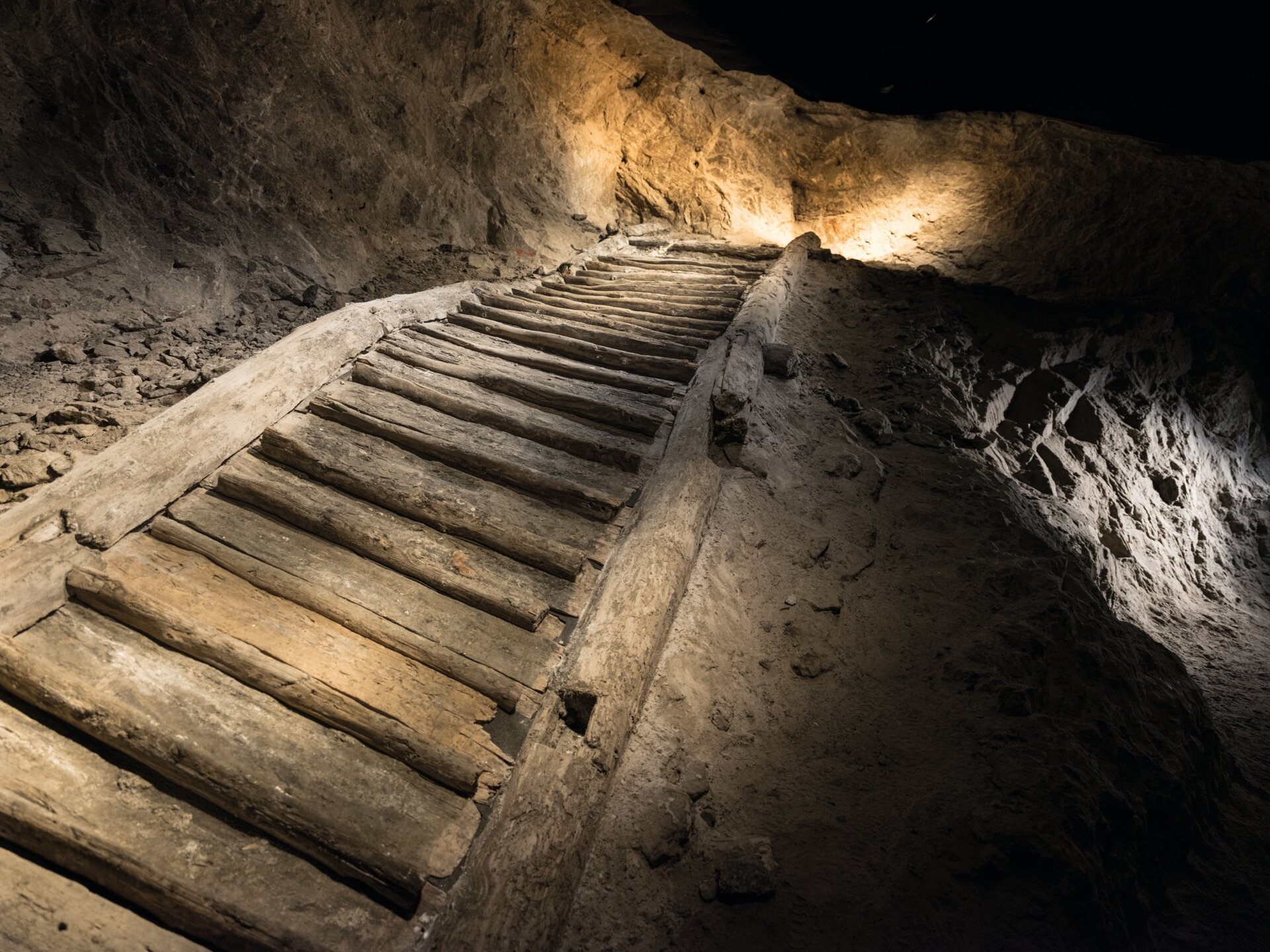The oldest wooden stairs in Europe, dating back 3100 years, were found in the prehistoric Hallstatt Salt Mine in Austria.

In the picturesque region of Hallstatt, Austria, a remarkable archaeological discovery has shed light on the ingenuity and craftsmanship of prehistoric societies. Unearthed within an ancient salt mine, these wooden stairs, estimated to be around 3,100 years old, hold the distinction of being the oldest known wooden stairs in Europe. This extraordinary find not only provides insights into the technological capabilities of our ancestors but also offers a glimpse into the daily lives and working conditions of prehistoric salt miners.
The Hallstatt salt mine, located in the Austrian Alps, has long been recognized for its historical significance. Salt mining in this region dates back thousands of years, with evidence of continuous operation since the Bronze Age. The discovery of the wooden stairs within this context underscores the advanced level of organization and infrastructure that existed in prehistoric mining operations. These stairs, meticulously crafted from timber, demonstrate a high degree of skill in woodworking and an understanding of structural engineering.

The stairs themselves are a marvel of ancient engineering. Constructed from durable wood, they have withstood the test of time, preserved by the unique conditions within the salt mine. The saline environment, coupled with the stable temperatures underground, created an ideal setting for the preservation of organic materials. This has allowed modern archaeologists to study the stairs in remarkable detail, gaining valuable insights into the construction techniques and materials used by prehistoric builders.
One of the most striking aspects of the discovery is the evidence it provides of the daily life and labor of the people who built and used these stairs. The Hallstatt salt mine was a bustling center of activity, where miners worked tirelessly to extract valuable salt deposits. The construction of wooden stairs within the mine would have facilitated easier access to deeper levels, improving the efficiency and safety of mining operations. This indicates a well-organized workforce and a society capable of planning and executing complex engineering projects.

Furthermore, the discovery of the stairs highlights the importance of salt in prehistoric societies. Salt was a highly valued commodity, essential for preserving food and sustaining life. The extensive mining operations at Hallstatt suggest that the community had a sophisticated understanding of resource management and trade. The salt extracted from these mines would have been a crucial resource, contributing to the economic and social stability of the region.
The significance of the Hallstatt wooden stairs extends beyond their immediate historical context. They offer a tangible connection to our distant past, reminding us of the ingenuity and resilience of early human societies. The preservation of such artifacts allows us to piece together the story of human development, shedding light on the technological advancements and cultural practices of our ancestors.

Today, the Hallstatt salt mine and its wooden stairs are of immense interest to historians, archaeologists, and tourists alike. The site has been designated a UNESCO World Heritage Site, recognized for its outstanding cultural and historical value. Visitors to Hallstatt can explore the ancient mine and gain a deeper appreciation for the remarkable achievements of prehistoric societies.
In conclusion, the 3,100-year-old wooden stairs discovered in the Hallstatt salt mine in Austria stand as a testament to the ingenuity and craftsmanship of our prehistoric ancestors. As the oldest known wooden stairs in Europe, they provide invaluable insights into the technological capabilities and daily lives of early miners. This extraordinary find underscores the historical significance of the Hallstatt region and offers a tangible connection to our distant past. Through the preservation and study of such artifacts, we continue to deepen our understanding of human history and the remarkable achievements of those who came before us.